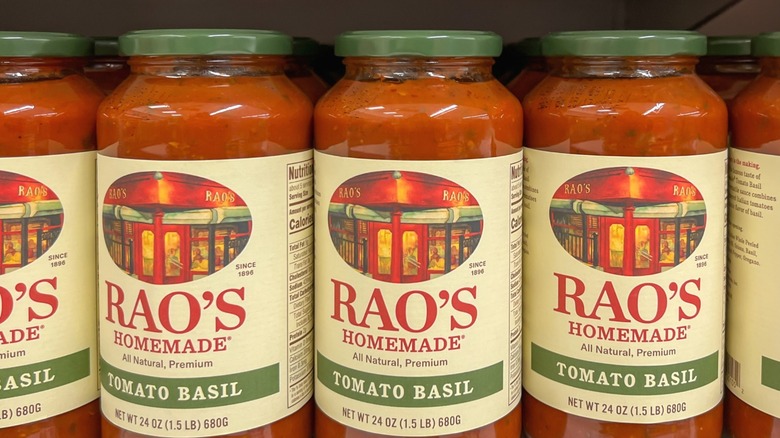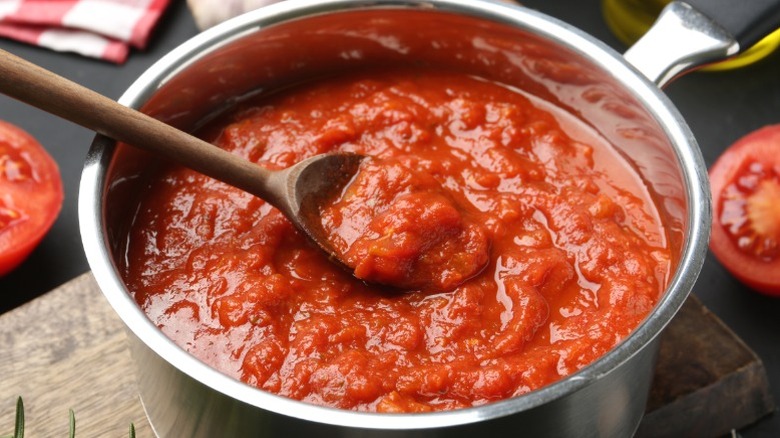Why Does Rao's Pasta Sauce Cost So Much More Than Prego?
"You get what you pay for" is one of those truisms we wish would stop being so true. What if we want to get something great that costs way less than it should? Unfortunately, economics rarely works out that way, and so we have to shell out ten bucks for good tomato sauce. A jar of Rao's marinara sauce, commonly considered one of the best tomato sauces on the market, will set you back $9.99, while a jar of Prego marinara will cost you just $2.48. Why is there such a wide gulf in price? Well, tasting the two sauces will probably tell you all you need to know — with all due respect to Prego, Rao's is in another league — but as for specific reasons, it has to do with ingredient quality and batch size.
Rao's, which originated as an iconic Italian restaurant in New York City, imports tomatoes from Southern Italy for their sauce, and plants seeds in, among other places, the area near Mount Vesuvius of Pompeii infamy. If you look at the ingredient list on a jar of Rao's marinara, you'll see every ingredient neatly accounted for: tomatoes, olive oil, and various herbs and spices. Prego, on the other hand, uses tomato puree and diced tomatoes (which are generally made from lower-quality tomatoes), with dried herbs and spices instead of fresh ones (and one ingredient which simply refers to "spices") and a splash of citric acid to serve as a preservative. Both sauces have their place, but one is clearly interested in being a premium product, while the other isn't.
Rao's makes their sauce in small batches
Another key difference between Rao's and Prego is how they make their sauce. Rao's, as you might expect from a sauce that originated in a restaurant, favors a slow-simmering cooking process, made in small batches. Obviously, "small batch" is a relative term when it comes to a tomato sauce that you'll find in most grocery stores, but it's clear that Rao's favors quality over quantity, and sets their price to match. It helps that its reputation as a premium sauce precedes it, building a brand around its quality and ensuring there will be plenty of people willing to pay extra.
With Prego, on the other hand, the process is likely far more industrialized. Prego doesn't go into too much detail about how their sauce is made on their website — the most it says is that their tomatoes are grown near each factory and are typically cooked within six to eight hours of being picked — but its ultra-low price would be almost impossible without mass production and plenty of automated labor. That low price point may inspire some brand loyalty of its own (despite some recommendations to avoid Prego altogether), but it's simply not the same kind of experience as Ina Garten's favorite sauce, Rao's. (They make a pretty solid frozen lasagna, too.)

